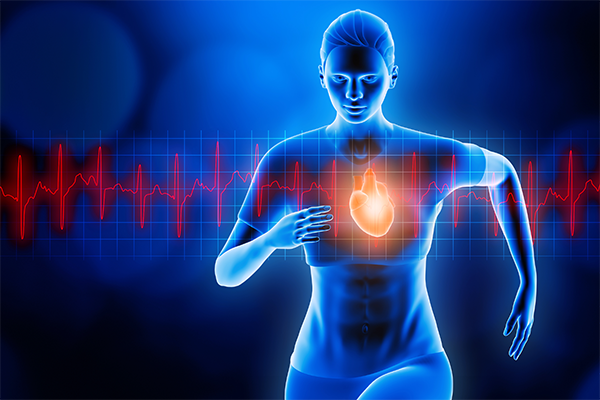
Understanding what constitutes a dangerous heart rate is crucial for maintaining cardiovascular health. The heart beat rate, which measures how many times the heart beats per minute, varies naturally depending on age, activity level, and overall health. Our cardiologists in Patiala are experts in assessing heartbeat rate and distinguishing between a normal heart rate and heart rates that require medical attention.
Knowing the normal heart rate by age and understanding the difference between heart rate and pulse rate helps in identifying potential heart problems early.
This blog discusses the critical aspects of knowing what a dangerous heart rate is, how it affects the body, and when to consult our cardiologists in Patiala for evaluation and treatment.
Synopsis
- Understanding Heartbeat Rate and Its Importance
- What Is Considered a Dangerous Heart Rate?
- Factors Influencing Heartbeat Rate
- The Difference Between Heart Rate and Pulse Rate
- Normal Heart Rate By Age
- When Heart Rate Becomes Dangerous
- How Our Cardiologists in Patiala Manage Dangerous Heart Rates
- Tips on Maintaining a Healthy Heart Rate
Understanding Heartbeat Rate and Its Importance
Heartbeat rate indicates the number of times your heart beats in one minute. It is a key indicator of heart health. The normal heart rate for adults typically ranges between 60 and 100 beats per minute, but this can vary due to age and individual fitness.
Our cardiologists in Patiala often explain that a lower resting heart rate is common in physically fit people, while children tend to have higher rates. Knowing the normal heart rate by age helps to recognise abnormalities early.
The difference between heart rate and pulse rate is subtle but important; heart rate is the actual number of heartbeats per minute, whereas pulse rate is the number of times the arteries expand with each heartbeat, usually measured at the wrist or neck.

What Is Considered a Dangerous Heart Rate?
A heart rate outside the normal range can sometimes indicate a dangerous condition.
-
A resting heart rate above 100 beats per minute, known as tachycardia, may mean the heart is working too hard.
-
Conversely, a heart rate below 60 beats per minute is called bradycardia, which may also be problematic unless you are a well-trained athlete.
Our cardiologists in Patiala emphasise that context matters; what might be dangerous for one person may be normal for another. For example, a high heart rate during exercise is expected, but an abnormally high rate at rest could be a sign of underlying health issues like arrhythmia, heart disease, or electrolyte imbalances.
Symptoms such as:
-
Dizziness
-
Fainting
Combined with an abnormal heart rate, requires immediate consultation with our cardiologists in Patiala.
Factors Influencing Heartbeat Rate
Several factors impact heart rate:
-
Age
-
Fitness level
-
Temperature
-
Emotional state
-
Medication use
Overall cardiovascular healthFor example, fever or anxiety can temporarily raise your heart rate, while some medications like beta-blockers reduce it.
Our cardiologists in Patiala consider these factors when evaluating heart rates to avoid misdiagnosis.
The Difference Between Heart Rate and Pulse Rate
Although often used interchangeably, heart rate and pulse rate have distinct meanings.
-
Heart rate refers to how many times the heart contracts per minute, while pulse rate measures the tactile arterial pulsations created by these heartbeats.
-
Pulse rate can be affected by factors like arterial stiffness or peripheral circulation, which is why heart rate is a more direct measurement of cardiac function.
Our cardiologists in Patiala use advanced diagnostic tools like electrocardiograms (ECG) to measure heart rate accurately.
Normal Heart Rate By Age
Heart rate norms change with age.
-
Newborns have much higher normal heart rates (100-160 bpm) compared to adults.
-
Children and adolescents have higher rates than adults, and the heart rate typically declines with age.
-
Adults generally have a normal heart rate between 60 and 100 bpm.
Our cardiologists in Patiala use age-appropriate heart rate guidelines to assess patient health accurately.
When Heart Rate Becomes Dangerous
A consistently dangerous heart rate may lead to serious health problems.
-
Tachycardia, or a high heart rate, causes the heart to work inefficiently and can result in complications such as stroke, heart failure, or sudden cardiac arrest if untreated.
-
Bradycardia can limit the heart’s ability to pump enough blood, causing dizziness or fainting.
Our cardiologists in Patiala stress that abnormal heartbeat rate signals should never be ignored, and early evaluation is critical.
How Our Cardiologists in Patiala Manage Dangerous Heart Rates
Our cardiologists in Patiala provide a comprehensive evaluation of heartbeat rate using physical exams, ECG, Holter monitors, or stress tests. Depending on the cause, treatments range from lifestyle changes and medications to procedures like pacemaker insertion. Patient education on maintaining a healthy, normal heart rate for adults and children is also a priority.
Tips on Maintaining a Healthy Heart Rate
Maintaining a healthy heart rate involves regular exercise, stress management, balanced nutrition, avoiding tobacco, and controlling chronic conditions like hypertension or diabetes. Our cardiologists in Patiala work closely with patients on individualised plans focused on long-term cardiovascular health.
Recognising what a dangerous heart rate is and understanding the normal heart rate by age are vital steps towards a healthy life. Knowing the difference between heart rate and pulse rate aids in accurate self-monitoring. Our cardiologists in Patiala are here to help you understand and manage your heartbeat rate effectively, ensuring better heart health and peace of mind.
FAQ's
A normal heart rate for adults ranges between 60 and 100 beats per minute at rest. Factors such as fitness, age, and medication influence this range. Consult our cardiologists in Patiala for personalised evaluation.
Heartbeat rate is higher in infants and children, gradually decreasing with age. Older adults typically have resting heart rates within the 60-100 bpm range, emphasising the importance of age-specific heart health monitoring.
Heart rate measures heartbeats per minute from cardiac contractions, while pulse rate counts arterial expansions felt externally. Pulse may differ due to circulation factors; our cardiologists in Patiala use precise heart rate measurements.
Seek medical advice if your resting heart beat rate is consistently above 100 or below 60 bpm, especially with symptoms like dizziness, chest pain, or breathlessness. Early consultation with our cardiologists in Patiala is crucial.
Yes, improving fitness, managing stress, maintaining a balanced diet, and avoiding smoking help normalise heart rates. Our cardiologists in Patiala provide guidance to integrate these changes effectively for better cardiovascular health.





















 5 Min Read
5 Min Read

.png)














